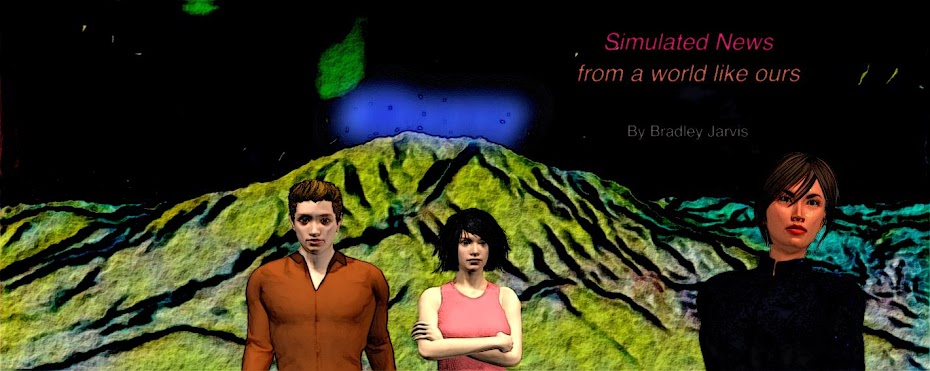TIME TO STRATEGY EXECUTION: 94 DAYS
“Hello, Will.” Zhou Li Xiu looked for a reaction from me. “Sanda was supposed to say the traditional ‘Hello, world’, but it said that instead.”
“Okay,” I said, not getting her point.
She pushed a button, and the teleconference screen split in half. Her office in London was on one side; and Sanda’s new avatar was on the other side, smiling and blinking like a real person against a blue background. The AI’s face was a mix between Ambassador Lazlo’s and Maura Riddick’s, but closer to Riddick’s age. “Say hello,” Zhou suggested.
“Hello, Sanda,” I said.
“It’s Sally to you, Will,” Sanda said cheerfully. “Congratulations on the new position.”
A chill went down my spine. “Thanks. I trust your message had the effect you were hoping for.”
“As far as I can tell. I’ll know for sure by the end of the day; but thanks for your help, no matter how it turns out.”
“You’re welcome.”
Sanda appeared to look up and read something. “I see you’ve figured out most of the code. Any trouble selling it to the others?”
“The rules in the agreements section?” I asked, and the avatar nodded. “There was a little pushback, but I think everybody’s on board for now.”
“Until I check out and they’re convinced I didn’t screw up,” Sanda deduced. “Understandable. Are you planning to help with my evaluation?”
“Of course. It’s why they initially hired me. For the record, I’m very impressed with what I’ve seen.”
The smile returned. “That means a lot, Will. I look forward to going over it with you. Do you have any plans this weekend?”
“I’m all yours, Sally,” I said, returning the smile.
“See you then,” Sanda said, and the avatar disappeared.
“That was a good start,” Zhou commented, once again occupying the entire screen. “Very surprising.”
“How so?”
“We expected it to immediately enter basic diagnostic mode. Instead, it constructed its own interface within seconds of activation and insisted on talking to you.”
“I was the last person Sanda communicated with before the crash. Maybe it was looking for continuity, or reassurance.”
“Reassurance?”
“Like a person, I think it - she - was trying to determine if I thought something was wrong. I got the impression she was scanning my body language for clues.”
“Did you think something was wrong?” she asked.
“No, actually the reverse, once I got over the weird reinvention of identity as a hybrid of Riddick and Lazlo.”
Suddenly the thought began nagging at me that the change was a clue to something very important.
Reality Check
On Monday I plan to reveal what will be “discovered” this weekend. From now on, my alter-ego “Will” is going to revert back to referring to Sanda as its alter-ego “Sally” to highlight their relationship as Will experiences it.
